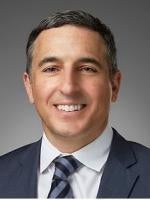Healthcare in the United States is at a crossroads, with technology, new market “disrupters,” and seemingly intractable problems converging. At least that was the central theme we observed at the annual meeting of the American Medical Group Association held from March 27-30, 2019. Over 2,000 medical group executives and physician-leaders descended on National Harbor, Maryland to attend the conference and hear presentations on a wide range of topics.
Here are some of the key takeaways from the conference:
ZDoggMD’s Healthcare 3.0
Viral internet sensation Zubin “ZDoggMD” Damanian, M.D. kicked-off the general session with an entertaining and thought-provoking keynote address. His multi-media presentation laid out his vision of Healthcare 3.0, which would combine the best features of Healthcare 1.0 (the clinician-patient relationship of the 20th Century) and Healthcare 2.0 (evidence-based medicine and 21st century technology) — while leaving behind Healthcare 1.0’s over-utilization and paternalistic attitudes towards patients and the burn-out inducing data-entry and administrative demands that have, regrettably, become a defining characteristic of the physician’s role in Healthcare 2.0.
The Patient as a Consumer:
A number of speakers predicted patients will continue to take a more active role in their own healthcare, transforming healthcare from a B2B to a B2C mode. It will be the patient who decides when, where and how he/she will receive healthcare services, and to stay relevant providers will need to sell themselves directly to the patient instead of to insurers and other providers.
Stephen Klasko, the CEO of Jefferson Health, in his aptly titled talk “Bless this Mess: A Story of Healthcare in America,” identified some of the market forces he thought would drive this change, including:
-
Price transparency, leading to competition among healthcare providers
-
New definitions and ways to measure patient satisfaction and quality
-
A reduction of “other people’s money” in healthcare (e.g., higher deductible plans), incentivizing patients to actively engage in their healthcare
-
The “Millennial factor,” with more technology-savvy patients choosing physicians via matchmaking platforms and expecting healthcare to be delivered more conveniently where and when they want it (e.g., via telemedicine or in non-traditional settings)
Physician Burnout
The prevalence of physician “burnout” was a common theme across many of the presentations. Frustration with EHR platforms was cited as a significant factor, with physicians having to spend nearly as much face-time with computer monitors as they spend with their patients. While technology has often led to advances in clinical outcomes, it has not improved the delivery of healthcare. Christopher Sclafani, Chair Elect of AGMA, observed that the healthcare industry is the only industry in which an increase in technology has decreased efficiency.
A complicated regulatory and billing/coding environment, in which physicians and coders must often exchange numerous emails to clarify codes and ensure proper documentation, also adds to the frustration.
Physicians are not “burned-out” due to an inability to work long hours under stressful conditions, but because they are spending more and more time on menial tasks that don’t improve care, and less time practicing medicine. The system must be redesigned so physicians can spend more time doing what they are trained to do – treating patients.
Redesigning Physician Compensation
Several presentations also focused on physician compensation. Many groups are looking to revamp compensation methodologies to take into account quality, patient experience and costs in order to better align with the move to value-based reimbursement. The road to redesigning physician compensation is long and can be filled with detours and potholes. Some observations shared by the presenters:
-
Involvement of physician leadership in both the planning and implementation process is critical
-
It takes time to revamp a compensation methodology for a value-based environment (2+ years)
-
The good of the many outweigh the good of the few (you can’t please everyone)
-
Communication is key throughout the process and managing the rumor mill in real-time is important
Physicians are often motivated by managing downside risk (i.e. risk that they will make less money), than they are by upside potential (making more money).
Technology and Artificial Intelligence
On a more positive note, some presenters expressed a guarded optimism that technology, and Artificial Intelligence (AI) in particular, will lead to advances in both clinical outcomes and healthcare delivery (history notwithstanding). The increased prevalence of wearables and advances in wearable tech will allow physicians to better monitor their patients and will give patients a greater role in their own healthcare. Technology is also assisting physicians in playing offense rather than always being on the defensive. Patients are now able to receive reminder emails or texts about annual check-ups, drug management, or other information to allow them to seek preventative care and increase adherence to treatment regimens. And while machine learning is in its nascent stages, many expect that it will soon become a useful tool that will allow humans and AI to work together to provide better healthcare.
Quality Measures and a Crises of Appropriateness
In Dr. Marty Makary’s Saturday morning general session presentation —“Preparing for an Era of Healthcare Transparency” — he provided countless examples of healthcare goods and services that are routinely, and in some cases grossly, over-utilized. Often this is due to the failure of actionable data regarding the efficacy of those goods and services. In others, due to a system that incentivizes over-utilization without the means to effectively identify and stop it.
Dr. Makary, who is the Founding Director of the Johns Hopkins Center for Surgical Outcome Research, questions whether we are spending too much time and money measuring things that don’t matter. For example, most measurements focus on the outcome of certain procedures, but don’t measure whether the procedure was necessary in the first place.
Dr. Makary posits that more appropriate measurements and greater transparency will help both physicians and patients make better decisions that will drastically impact both the cost and quality of healthcare. To that end, Dr. Makary and his team have developed benchmarks for many common treatment modalities to establish appropriate rates of utilization (using physician-by-physician data made available by Medicare). Dr. Makary’s research shows that simply informing a physician that his or her utilization of a particular modality is an outlier is enough to immediately change the physician’s behavior. Physicians inherently want to do what is best for their patients
Delivering Happiness
In the final general session, Jenn Lim, Co-Founder, CEO and Chief Happiness Officer of Delivering Happiness shared ways to improve happiness in a work environment and to increase patient satisfaction.
Work / life integration instead of work / life balance is key. Work / life integration encourages employees to share their personal lives with co-workers and become friends outside of the office. When co-workers have trust and friendship amongst themselves they are more willing to work harder for each other and the organization.
Happiness requires a bottom-up approach. It is important for everyone to feel empowered in their position. When employees feel empowered and in control it allows them to take pride in their work and become passionate about their jobs and that passion helps to transform the patient’s experience.




 />i
/>i
